Labubu wasn’t born viral. It was born in a fairytale—literally. A Nordic-inspired picture book drawn by Hong Kong-Belgian artist Kasing Lung. But in the last few months, this bug-eyed plushie with a toothy grin has found its way into Indian handbags, Instagram reels, and collector wishlists.
“You’re in a café. Someone walks in with a fuzzy little doll hanging from their tote. You don’t know its name—but the face is unforgettable. A weird, toothy grin. Elf-like ears. Welcome to the world of Labubu.”
— Ranjan Bhattacharya, Photographer & Visual Storyteller
In this piece, I’m not just covering a trend. I’m telling you a story—from Labubu’s quiet birth in a children’s book to its sudden, surreal explosion across India. Along the way, we’ll meet collectors, hear conspiracies, and explore how this oddball doll might just be the next big thing in Indian pop culture, even in brand photoshoots.
The Birth of Labubu: A Different Kind of Cute

Kasing Lung, the artist behind Labubu, never imagined his wild little characters would become billion-dollar icons. Labubu was first introduced in 2015 as part of The Monsters series—a Nordic-style fairytale told through expressive, sometimes eerie illustrations.
Labubu wasn’t cute in the way Barbie is cute. It had jagged teeth, exaggerated expressions, and odd proportions. It looked like something from a dream—or maybe a slightly mischievous nightmare. And maybe that’s why it stood out.
In 2019, Lung partnered with Pop Mart, a Chinese collectible toy company. Together, they brought Labubu into the world of blind-box culture: toys sold in sealed packages where you don’t know which one you’ll get. The mystery, surprise, and dopamine hit were addictive.
By 2022, Labubu had sparked a fan movement across Asia. Pop Mart’s social media channels dedicated to Labubu—spanning Instagram, Weibo, and Reddit—collectively saw over 80,000 active followers. Smaller communities also emerged in India by late 2023, like Telegram groups for blind-box trading and fan pages such as @labubuinindia, where collectors began showcasing rare finds.
What makes Labubu’s design so memorable is how different it is from the polished, symmetrical aesthetic we’ve come to expect from mainstream toys. It feels raw, textured, and a little offbeat—and maybe, in a world full of filters and AI-perfect beauty, that roughness feels more real.
The Rise in India: From Underground to Mainstream
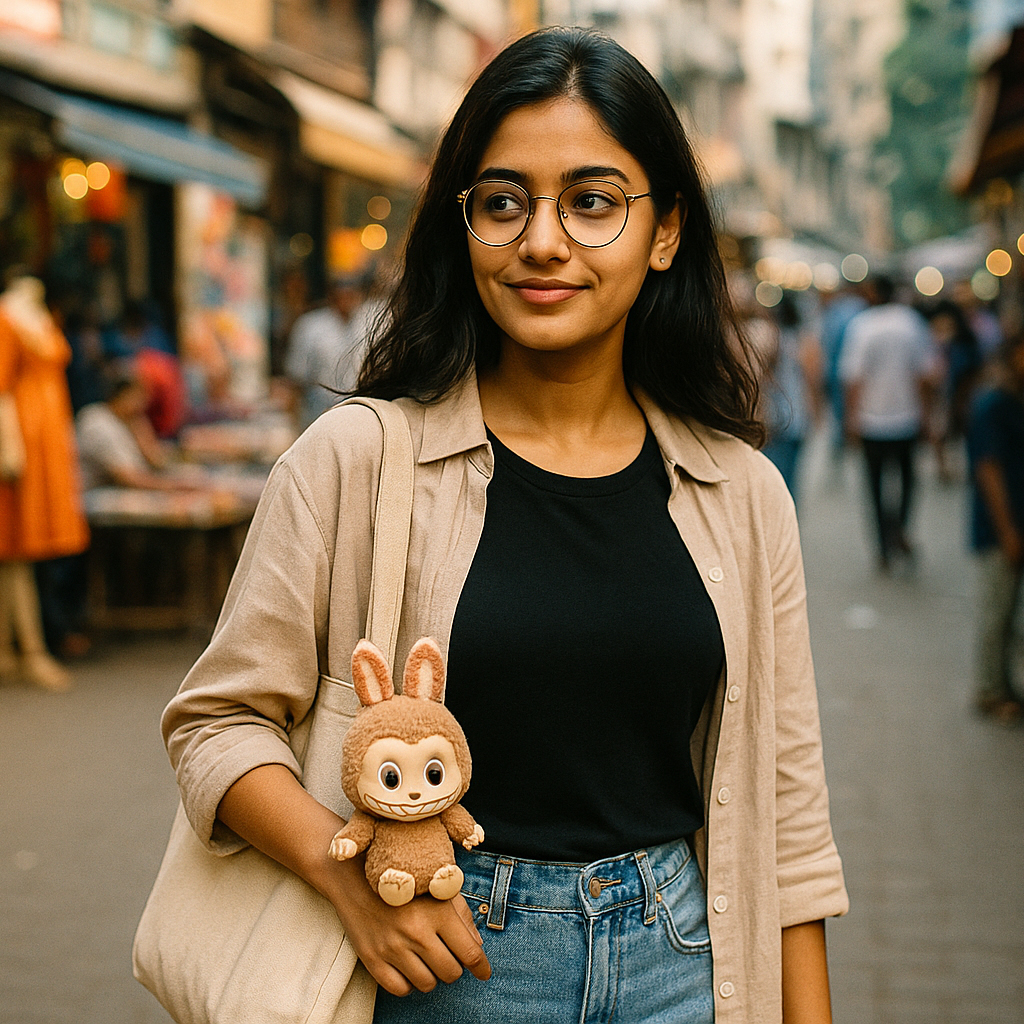
Labubu first entered Indian consciousness through resellers and a handful of travelling collectors. Many spotted it abroad—in Malaysia, Vietnam, and Singapore—and brought one back.
But by early 2024, it wasn’t just a toy anymore.
Labubu became an aesthetic. Influencers began attaching it to handbags. Mini plushies hung from rear-view mirrors. Delhi, Mumbai, and Bengaluru-based fashion bloggers turned it into a personality symbol.
One popular video featured a Gen Z creator unboxing a Labubu and reacting dramatically when they got the rare rainbow version. It went viral.
Ananya Panday, spotted at Mumbai airport with a pink Labubu keychain, said:
“When I stepped out with a pink Labubu charm, it just felt fun—nobody expected it on my bag!”
And that’s what makes Labubu so sticky in a culture like India’s, where storytelling isn’t a trend—it’s a tradition. Every corner tea stall has its regulars and their running tales. Labubu, in its own quirky way, fits right in.
The hashtag #LabubuIndia started gaining momentum. Hype stores in India like HypeFly, Sneakerverse, and Kalakaar began stocking blind boxes. Some stores even started Labubu-only drops. Pop-ups started surfacing at art fairs and college fests.
The Darker Side: Labubu and the Internet's Imagination
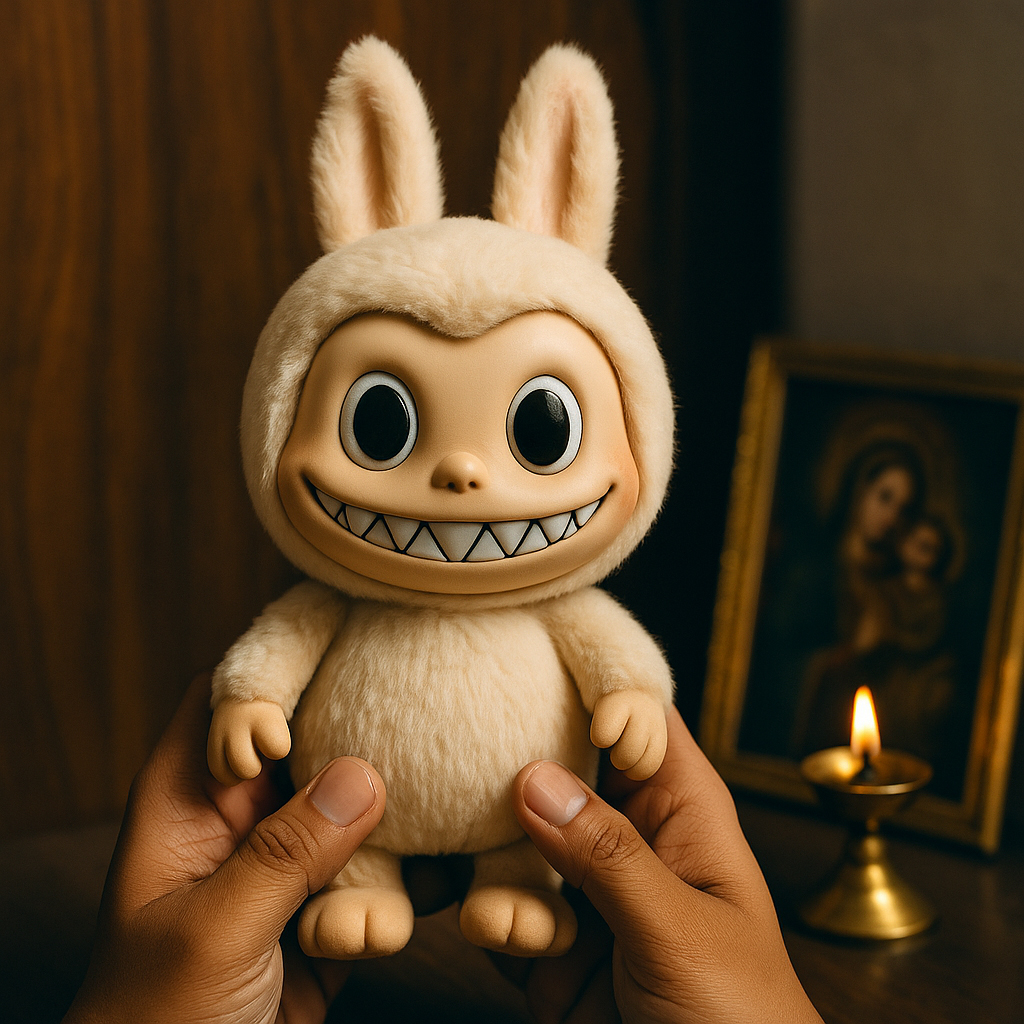
As the toy went viral, the internet did what it does best: gave it lore.
Some started claiming that Labubu was cursed. YouTube channels speculated it was inspired by Pazuzu, a demon from Mesopotamian mythology. Others said its toothy grin was too sinister to be "just a toy".
BLACKPINK’s Lisa mentioned in a recent interview:
“I’ve been going crazy for them for almost a year.”
Memes flooded in. Reels showed people blessing their Labubu with holy water. Some called it the new Annabelle.
Of course, none of it was real. But it gave Labubu another layer of virality: spooky but cute, cursed but collectible. And in the attention economy, that’s gold.
Interestingly, some say this eerie edge is what makes Labubu relatable. It’s not trying to be perfect. It’s chaotic, moody, playful, and unpredictable—just like most of us, honestly. In a generation learning to embrace its own mental messiness, Labubu feels more like a mascot than a monster.
Celebrity & Fashion Impact
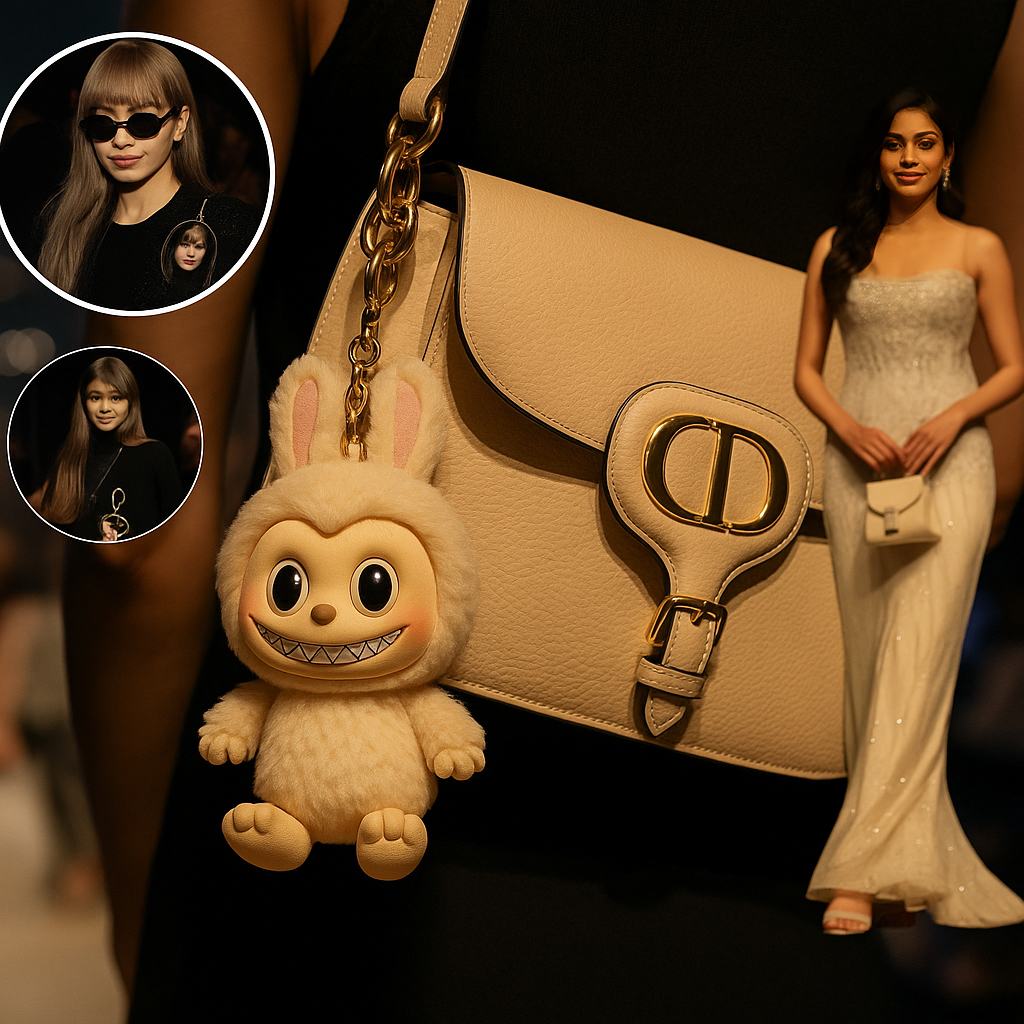
Labubu is no longer just in collector rooms—it’s on red carpets and runways.
BLACKPINK's Lisa was spotted with a Labubu keychain. Indian celebrities like Ananya Panday and Janhvi Kapoor have included it in bag shots. Even fashion designer Kunal Rawal posted a story with Labubu sitting among sunglasses and scarves on his studio table.
Brands are taking note. A few limited-edition streetwear collaborations in Japan and Thailand featured Labubu-printed hoodies. India won’t be far behind.
Even in the indie fashion space, Labubu has made an entrance. A few slow-fashion designers in Goa and Jaipur have already released Labubu-inspired prints, patches, and pins.
“Quirk is the new luxury. I spotted this little bug-eyed Labubu on someone's clutch at a party and couldn’t stop staring. It’s weird—and I love weird.”— Karan Johar, Filmmaker & Pop Culture Maven
In flea markets across Delhi, knock-off Labubu tees and keychains are already being sold by street vendors. When the bootlegs arrive, you know the trend has landed.
The Emotional Hook: Why India Fell for Labubu
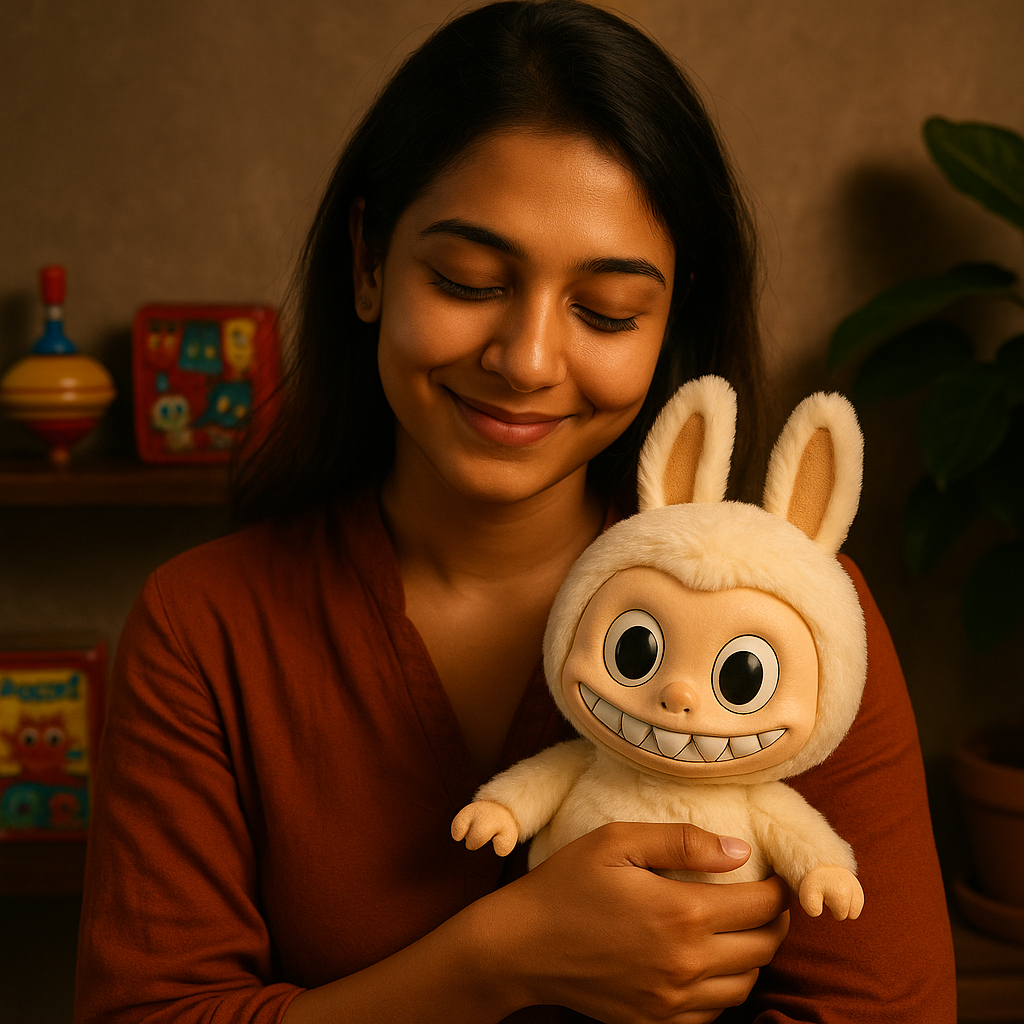
India has always had a strong emotional connection to storytelling. Labubu isn’t just a toy—it’s a story-in-a-box. Each edition has a theme: Forest Labubu, Monster Labubu, and Jungle Fantasy Labubu.
Collectors speak of them like personalities. Some describe the toys as spirit animals. Others use them for therapy.
Sneha, a 28-year-old artist from Bengaluru, said:
"I started collecting during a hard time. Labubu reminded me that it’s okay to be weird and expressive."
This emotional pull runs deep. For millennials who grew up with Tazos, Beyblades, and Pokémon cards—and Gen Z kids obsessed with Squishmallows—Labubu feels both nostalgic and new. It scratches that itch of childhood joy, but with an adult’s irony and edge.
For India’s growing "kidult" population—adults collecting childhood-like toys for comfort—Labubu is more than trendy. It’s intimate.
And in a world that often pushes us to hide what makes us odd, Labubu celebrates it.
Resale, Rarity, and the Madness of the Blind Box
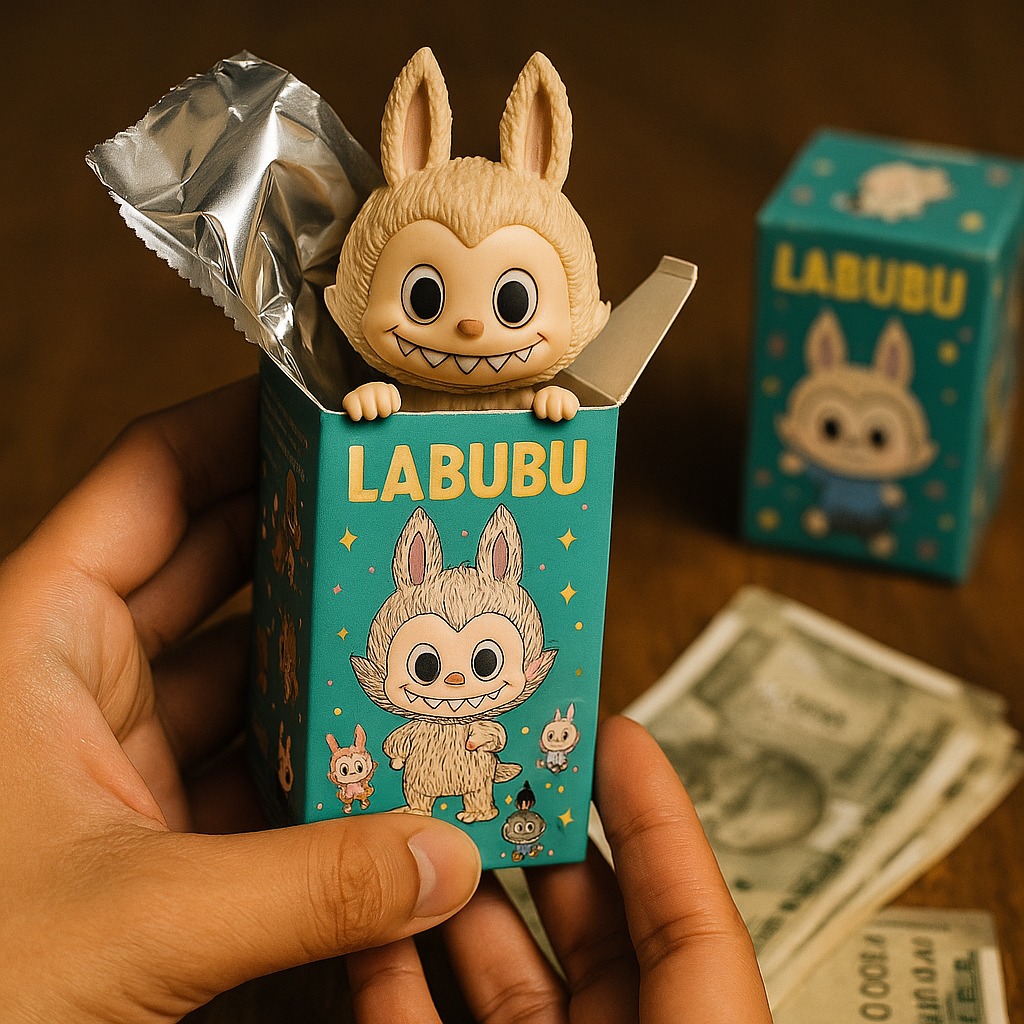
Labubu isn’t just a toy—it’s a lottery. You buy a box, but you don’t know which one you’ll get until you open it. That’s part of the thrill. Some boxes have regular characters, but once in a while, you might get a rare chase edition—and that’s where things get crazy.
In India, a regular Labubu blind box usually sells between ₹3,000 and ₹6,000, depending on where you’re buying it from. But if you happen to pull a rare version—like the rainbow, transparent, or spooky glow-in-the-dark ones—the resale value can shoot up.
We found listings in collector groups asking anywhere between ₹12,000 to even ₹30,000 for these rarities. A few even touched ₹50,000, but that’s more of an outlier than the norm.
“It’s kind of like crypto,” said Priyanka Khera, a Pet Nutritionist from Delhi.
“Last year I pulled a limited edition Forest Labubu and sold it for triple the price in 10 days.”
Some serious collectors even wait for drops in Telegram groups or use bots to auto-book sets during launches. Sounds intense, but that’s the kind of fandom this weird little doll has built.
It's not just about toys anymore—it's about the chase, the bragging rights, and that small moment of jackpot joy when you open the box.
What It Means for Visual Creators & Photographers
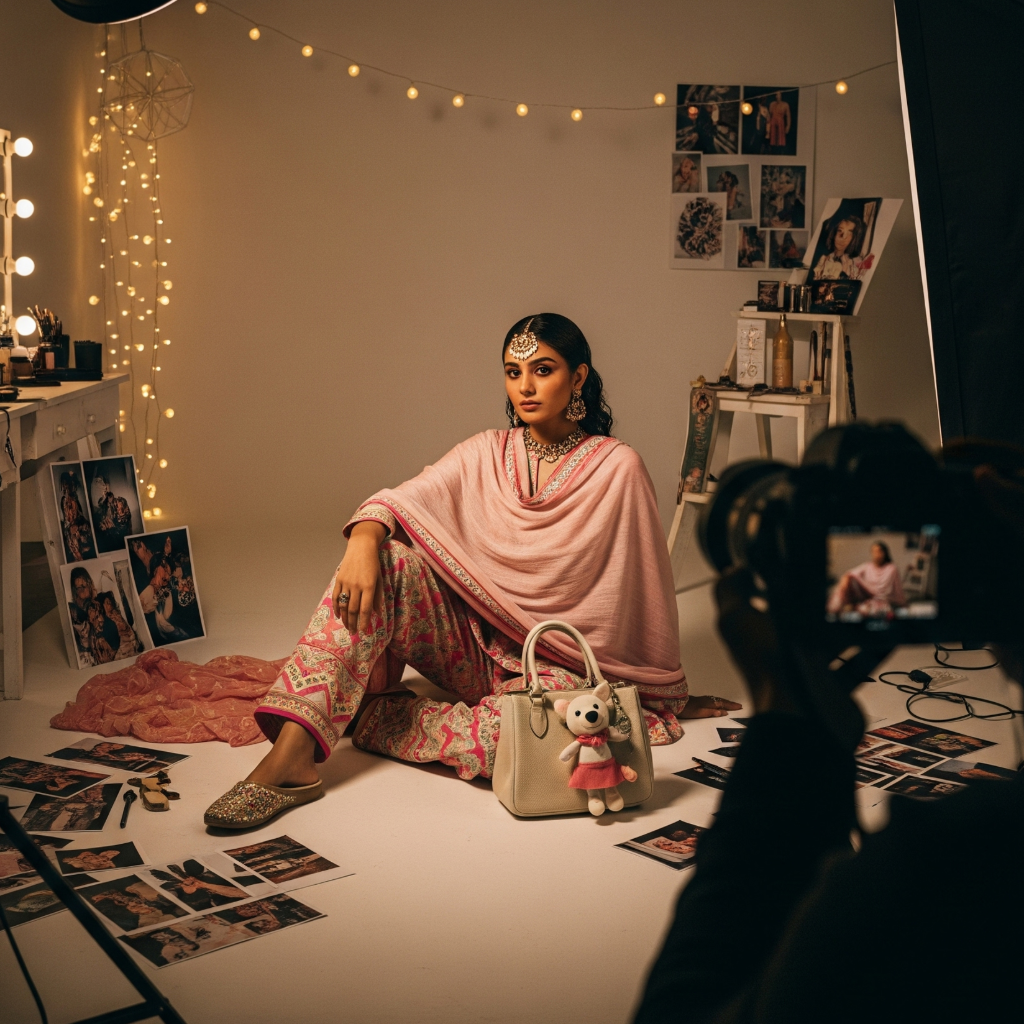
Labubu isn’t just a collectible—it’s a visual opportunity. Here's how photographers and ad campaigners can ride the trend:
Storyboarding Ideas:
- Fashion shoot: Place a Labubu doll on a model’s handbag for a quirky accessory.
- Unboxing reels: Shoot tight close-ups of box openings with real-time emotions.
- Juxtaposition shots: Labubu in contrast with high-end makeup or in nature backgrounds—ugly-cute meets aesthetic.
- Diwali edit: Labubu with fairy lights and ethnic fabrics.
Art Direction Tips:
- Use split lighting to emphasise texture and creepiness.
- Go for pastel props + harsh shadows to reflect the character's contrast.
Labubu might just inspire our next quirky campaign—see how our ad shoots evolve → Explore our advertising photography
In fact, it’s not just Indian creators embracing the Labubu aesthetic. International icons like Rihanna and Dua Lipa have also been spotted flaunting these offbeat dolls as bag charms and collectibles. Their playful take on fashion adds weight to what’s quickly becoming a global visual cue for rebellion and charm in one frame. Celebs showing off their Labubu love →
The India Pop Culture Impact: Where It’s Going
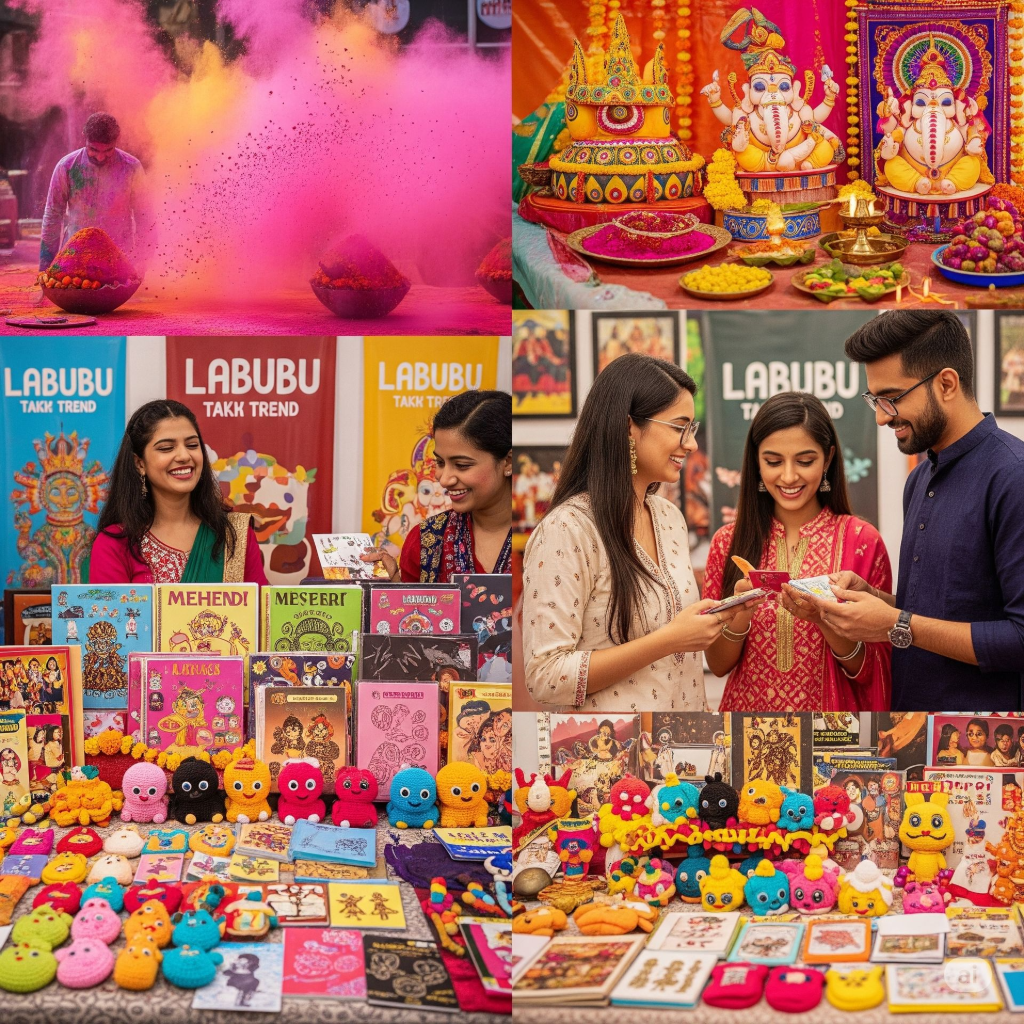
- Pop Mart is exploring more Indian retail collaborations
- Indian designers may soon launch co-branded editions
- Labubu-inspired mehendi, clay art and crochet crafts have started popping up on Etsy India and Instagram
- Mini Labubu stalls at Comic Con India 2025 in planning
Want more trend deep-dives like this? Explore our blog
What’s next? Animated shorts? Labubu-themed cafes? You never know.
It’s not impossible to imagine a Labubu Holi Edition in pink and orange someday—or even Ganpati pandals featuring Labubu-inspired decorations for the fun of it.
Closing Thoughts
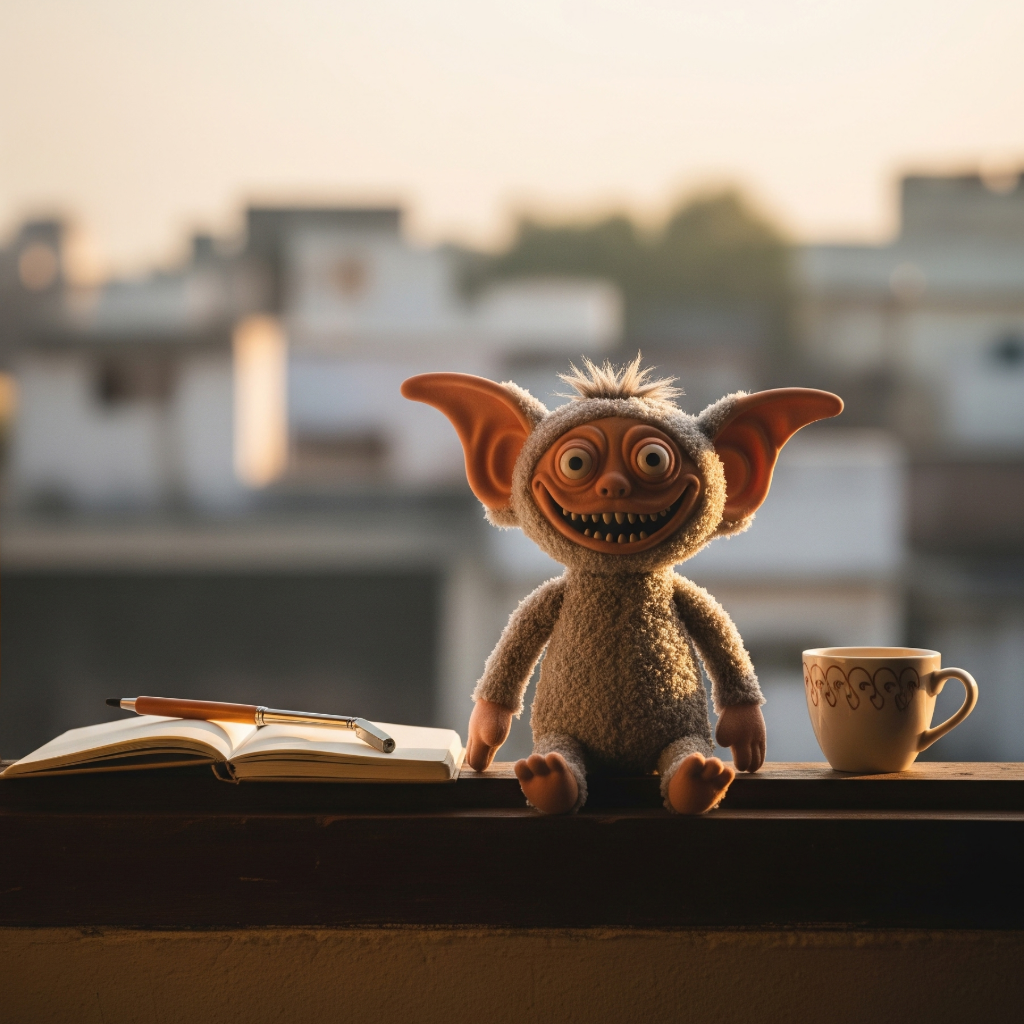
Labubu is strange. It’s toothy and small and not what you think of when you hear "cute". But maybe that’s why it works.
It disrupts. It surprises. It speaks to the weird little misfit in all of us.
In an India where identity is increasingly layered, expressive, and online, Labubu feels... right. It’s not just a toy. It’s a mirror of the moment we’re living in. It invites us to celebrate the unexpected, the odd, and the authentic. And that, more than anything, is what makes it unforgettable.
Have you spotted Labubu in your city yet? Drop your stories here or tag us on Insta.